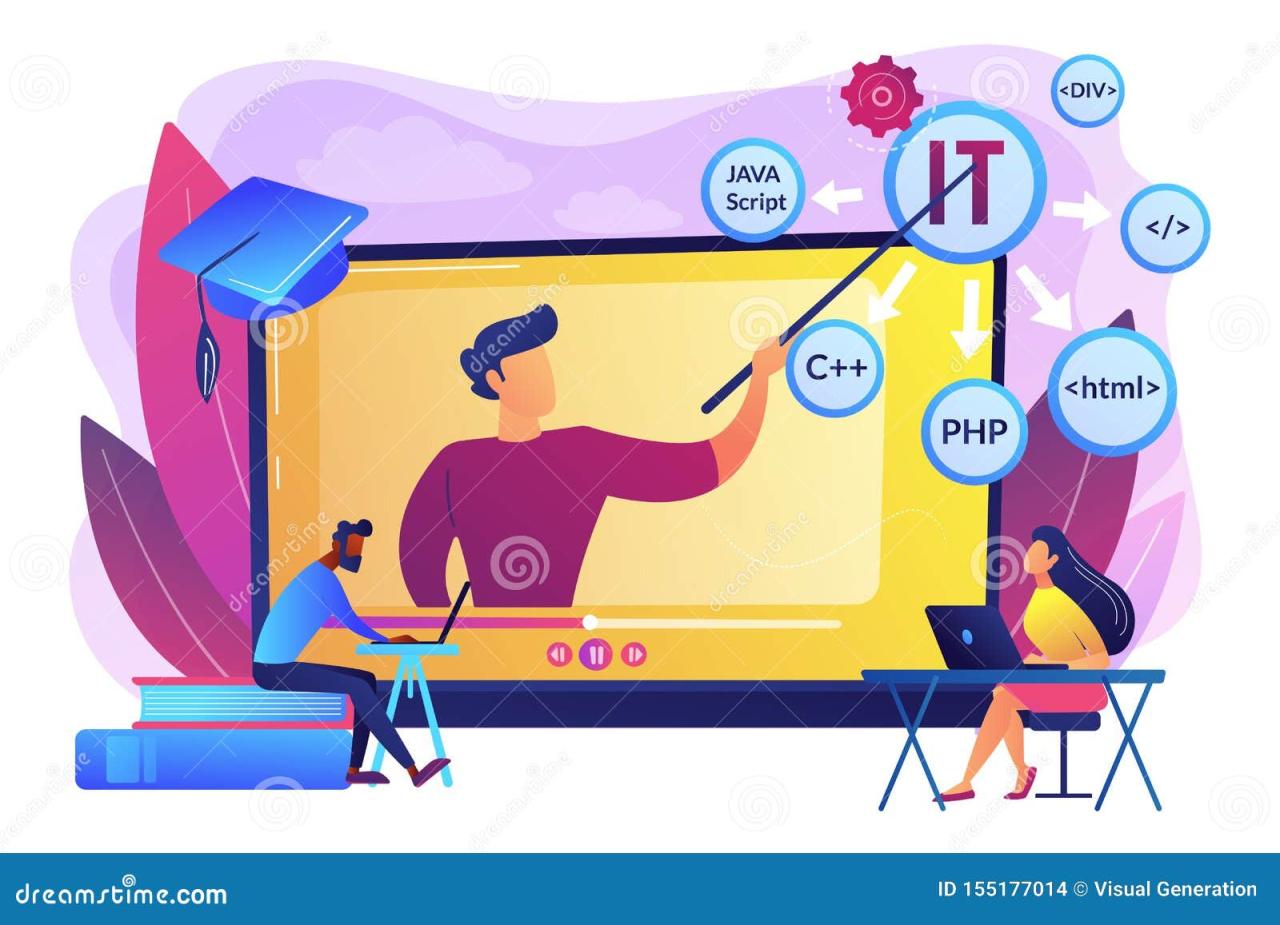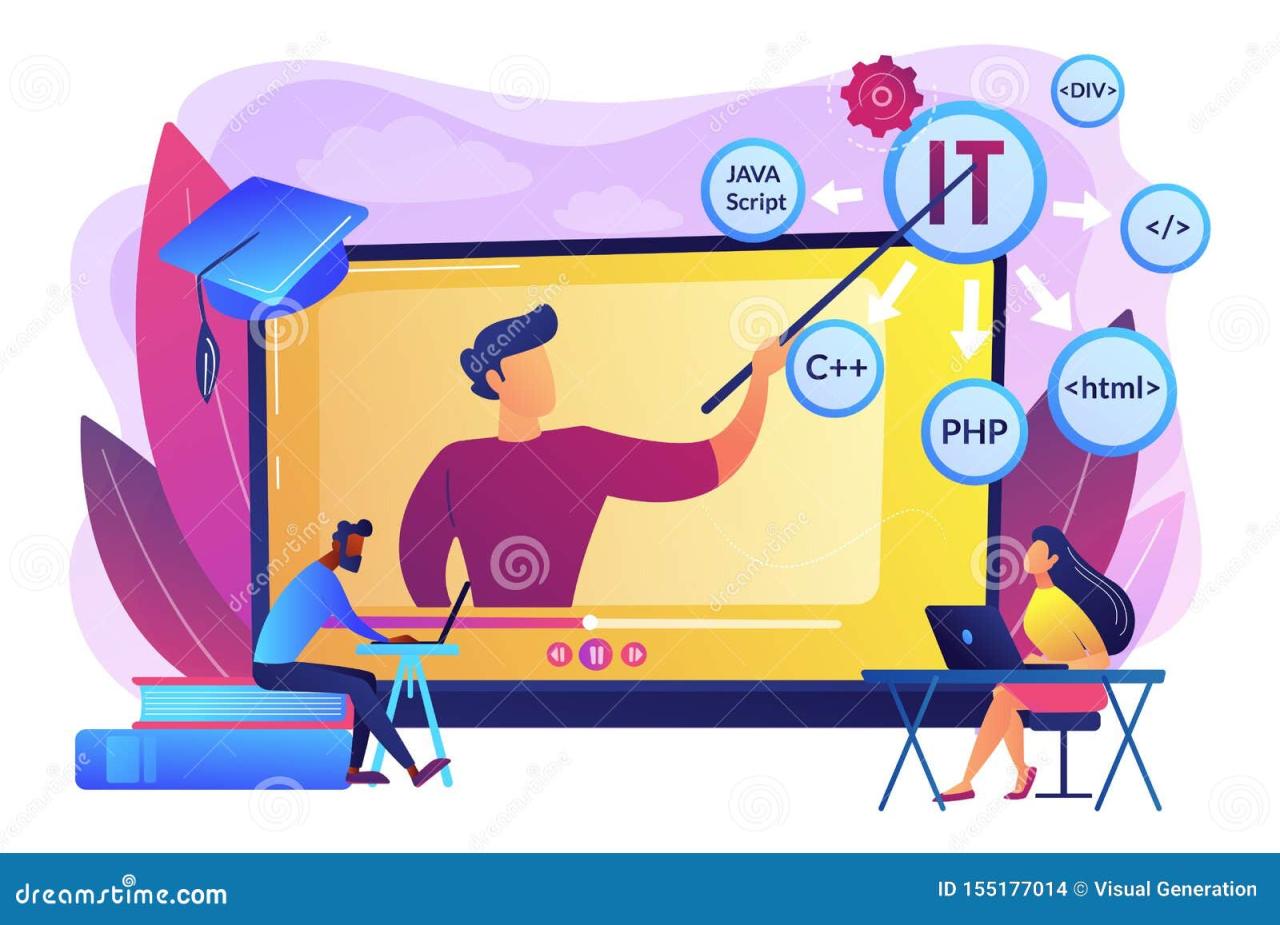IT Courses offer a gateway to exciting tech careers. Whether you’re a complete beginner or looking to upskill, the right course can transform your future. From cybersecurity to data science, the possibilities are vast and the demand is high. This guide explores various IT courses, their content, learning methods, costs, and future trends, helping you navigate the options and make informed decisions.
We’ll cover everything from understanding different course types (certifications versus degrees) and choosing the right learning style (self-paced or instructor-led) to assessing the return on investment and identifying future-proof skills. We’ll also delve into specific course examples and curricula, providing a comprehensive overview of the IT training landscape.
Thinking about IT courses? A big part of the tech world relies on manufacturing, and understanding global supply chains is key. Check out this insightful article on how China’s manufacturing dominance impacts tech: China is the manufacturing superpower | Hacker News. This knowledge will give you a serious edge in your IT career, helping you understand the bigger picture beyond just coding.
So, start exploring those IT courses now!
Types of IT Courses
The IT field offers a vast array of courses catering to different skill levels and career aspirations. Understanding the various types available is crucial for choosing the right path.
Categorized List of Common IT Courses
Here’s a table categorizing common IT courses, providing a snapshot of their content and typical duration. Note that durations can vary significantly based on the institution and course intensity.
| Course Category | Course Name | Description | Typical Duration |
|---|---|---|---|
| Cybersecurity | Ethical Hacking | Learn to identify and exploit vulnerabilities to improve system security. | 8-12 weeks |
| Data Science | Data Analysis with Python | Master data manipulation, analysis, and visualization using Python libraries. | 12-16 weeks |
| Network Administration | CCNA (Cisco Certified Network Associate) | Gain foundational knowledge of networking concepts and Cisco technologies. | 6-12 months |
| Software Development | Java Programming | Learn the fundamentals of Java programming and object-oriented design. | 12-16 weeks |
| Cloud Computing | AWS Certified Cloud Practitioner | Understand fundamental AWS cloud concepts and services. | 4-8 weeks |
Certification-Based vs. Degree-Based IT Courses
Certification-based courses focus on specific skills and technologies, leading to industry-recognized certifications. Degree-based courses offer a broader education, including theoretical foundations and practical applications, culminating in an associate’s, bachelor’s, or master’s degree.
Certifications are quicker to obtain and often target specific job roles, while degrees provide a more comprehensive understanding and can open doors to a wider range of opportunities. The choice depends on individual goals and career aspirations.
So you’re thinking about IT courses? Choosing the right one can be a game-changer, just like a surprise title win in La Liga. Check out this article about how an Atletico Madrid star is warning their rivals – Atletico Madrid star fires La Liga title warning – for some perspective on strategic planning. Learning a new IT skill is your own personal title race; put in the work, and the rewards will follow!
Career Paths Associated with IT Course Specializations, It courses
Different IT course specializations lead to diverse career paths. For example, cybersecurity courses can lead to roles like security analyst or penetration tester; data science courses can lead to data scientist or data analyst positions; and network administration courses can lead to network engineer or system administrator roles. Software development courses can lead to software engineer, web developer, or mobile app developer positions, while cloud computing courses can lead to cloud architect or cloud engineer roles.
Course Content and Curriculum
A well-structured curriculum is essential for effective IT learning. The content should be progressively challenging, building upon foundational knowledge.
Sample Curriculum for a Beginner-Level IT Course
This sample curriculum focuses on fundamental IT concepts. It’s designed for beginners with little to no prior experience.
- Introduction to Computers and Networking
- Operating Systems Fundamentals (Windows and/or Linux)
- Basic Troubleshooting Techniques
- Introduction to Programming Logic
- Data Management Basics
- Introduction to Cybersecurity Concepts
Comparison of Curricula: Software Development vs. Database Management
Software development courses emphasize programming languages, software design principles, and software development methodologies. Database management courses, conversely, focus on database design, SQL programming, data modeling, and database administration. While both are valuable in the IT field, they require different skill sets and lead to distinct career paths.
Detailed Module: Network Security Protocols

This module would cover fundamental network security protocols such as TCP/IP, UDP, HTTPS, and SSL/TLS. It would delve into their functions, security implications, and practical applications. Hands-on exercises and simulations would reinforce learning. The module would also discuss the importance of firewalls, intrusion detection systems, and virtual private networks (VPNs) in securing network infrastructure.
Learning Methods and Resources

Effective learning methods and reliable resources are vital for successful IT training. The choice of method depends on individual learning styles and preferences.
Effective Learning Methods for IT Courses
| Method | Description | Pros | Cons |
|---|---|---|---|
| Self-paced learning | Learning at your own speed using online resources. | Flexibility, cost-effectiveness | Requires self-discipline, less interaction |
| Instructor-led training | Classroom-based learning with an instructor. | Structured learning, direct interaction | Less flexibility, potentially higher cost |
| Online platforms (e.g., Coursera, Udemy) | Online courses offered by various institutions and instructors. | Accessibility, variety of courses | Quality can vary, requires self-motivation |
Benefits and Drawbacks of Online Learning Resources
Online platforms like Coursera, Udemy, and edX offer extensive IT courses, but the quality and structure can vary significantly. Some platforms offer structured programs with certifications, while others offer individual courses with varying levels of support. Choosing a reputable platform with positive reviews is crucial.
Essential Tools and Software
For many IT courses, specific software and tools are required. For example, a software development course might require specific IDEs (Integrated Development Environments) and programming language compilers. A network administration course might require network simulation software. A cybersecurity course may necessitate virtual machines and penetration testing tools.
Cost and Return on Investment

The cost of IT courses varies significantly depending on several factors, including the type of course, institution, and duration. However, the potential return on investment (ROI) can be substantial.
Factors Influencing the Cost of IT Courses
Course type (certification vs. degree), institution reputation, course duration, and the inclusion of lab fees or software licenses all contribute to the overall cost. Bootcamps tend to be more expensive but shorter, while university degrees are typically more affordable per unit but longer.
Improving Career Prospects and Earning Potential
- Cybersecurity certifications can lead to higher-paying roles with increased job security.
- Data science skills are in high demand, resulting in competitive salaries and numerous opportunities.
- Cloud computing expertise is crucial in today’s IT landscape, offering excellent career prospects and compensation.
Return on Investment (ROI) for Different IT Course Types
The ROI of IT courses is influenced by the tuition fees, time commitment, and potential increase in future earnings. While shorter, certification-based courses may have a quicker ROI, degree-based courses offer a potentially higher long-term return due to increased earning potential and career advancement opportunities. A cost-benefit analysis is essential to determine the optimal course type for individual circumstances.
So you’re thinking about IT courses? Choosing the right one can be a game-changer, just like Real Madrid’s achievement in becoming the first team to reach 5000 LaLiga points – check out this article for the details: Real Madrid become first team to reach 5000 LaLiga points. Back to IT courses, remember to consider your career goals and the skills you want to gain before you enroll.
Future Trends in IT Courses
The IT industry is constantly evolving, necessitating continuous adaptation in IT course development. Emerging technologies and changing industry demands shape the skills required for future success.
Emerging Trends Shaping IT Course Development
Artificial intelligence (AI), machine learning (ML), big data analytics, cybersecurity, and cloud computing are driving significant changes. IT courses are incorporating these technologies into their curricula to equip students with relevant skills.
Adapting to Evolving Industry Needs
IT courses are incorporating new technologies and focusing on specific skill sets to meet industry demands. For example, many courses now incorporate cloud-based platforms and tools, while others focus on specific programming languages or cybersecurity frameworks.
Acquiring Future-Proof IT Skills
Focusing on foundational skills like problem-solving, critical thinking, and adaptability is key. Specializing in areas with sustained demand, such as cybersecurity, cloud computing, and data science, increases the likelihood of long-term career success. Continuous learning and upskilling are crucial for staying relevant in this dynamic field.
Choosing the Right IT Course
Selecting the right IT course requires careful consideration of personal goals, prior experience, and available resources.
Step-by-Step Guide for Choosing an IT Course
- Identify your career goals: Determine your desired career path in IT.
- Assess your current skills and experience: Identify your strengths and areas needing improvement.
- Research different IT courses: Explore various courses aligning with your goals.
- Evaluate course providers: Consider factors like reputation, curriculum, and instructor qualifications.
- Compare costs and funding options: Determine the financial implications and available funding sources.
- Make your decision: Choose the course that best suits your needs and aspirations.
Evaluating IT Course Providers and Programs
Consider factors such as accreditation, instructor experience, student reviews, curriculum relevance, and career support services offered by the provider. A thorough evaluation process helps ensure you choose a high-quality program.
Checklist for Selecting an IT Course
- Course content and curriculum
- Instructor qualifications and experience
- Learning format (online, in-person, hybrid)
- Cost and payment options
- Career services and job placement assistance
- Student reviews and testimonials
- Accreditation and certifications offered
Conclusive Thoughts: It Courses
Ultimately, choosing the right IT course is a personal journey, dependent on your goals, background, and learning preferences. By carefully considering the factors Artikeld in this guide—cost, curriculum, learning methods, and future trends—you can confidently select a program that aligns with your aspirations and sets you on the path to a successful tech career. Remember to research providers thoroughly and focus on developing in-demand skills to maximize your return on investment.
Clarifying Questions
What’s the difference between a bootcamp and a degree program?
Bootcamps are intensive, short-term programs focused on practical skills, while degrees offer a broader, more theoretical education.
Are online IT courses as effective as in-person classes?
Effectiveness depends on learning style and self-discipline. Online courses offer flexibility but require more self-motivation.
How can I finance an IT course?
Options include scholarships, grants, loans, and employer-sponsored training.
What are the most in-demand IT skills right now?
Cloud computing, cybersecurity, data analytics, and AI/machine learning are currently high in demand.
